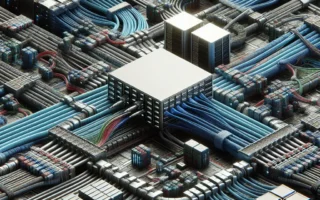Implementing Multi-layered Authentication to Strengthen Grid Infrastructure Security
Implementing multi-layered authentication is a crucial aspect of enhancing cybersecurity in grid infrastructure. With the growing number of cyber threats targeting grid systems, implementing advanced authentication methods is essential to strengthen the security posture of these critical networks.
Multi-layered authentication involves the use of multiple factors to verify the identity of users accessing grid infrastructure. This approach goes beyond traditional username and password combinations, incorporating additional factors such as biometric data, security tokens, and one-time passwords. By requiring multiple forms of authentication, grid operators can significantly reduce the risk of unauthorized access and potential cyber intrusions.
Furthermore, the implementation of multi-layered authentication can help mitigate the risks associated with credential theft and brute-force attacks. Even if malicious actors manage to compromise one form of authentication, they would still need to overcome additional layers of security, making unauthorized access significantly more challenging.
In addition to enhancing security, multi-layered authentication can also provide grid operators with greater visibility and control over user access. By implementing granular authentication policies, organizations can ensure that users only have access to the resources and systems necessary for their roles, reducing the potential impact of insider threats and unauthorized activities.
Overall, the implementation of multi-layered authentication is a critical step in strengthening the security of grid infrastructure against evolving cyber threats. By adopting advanced authentication methods, grid operators can significantly reduce the risk of unauthorized access and better protect these critical systems from potential cyberattacks.
Leveraging Machine Learning for Proactive Threat Analysis in Grid Cybersecurity
Enhancing cybersecurity in grid infrastructure is crucial in ensuring the reliable and secure operation of power systems. One innovative approach to bolstering grid cybersecurity is leveraging machine learning for proactive threat analysis. Machine learning algorithms have the capability to analyze massive volumes of data and identify potential threats in real time, allowing grid operators to take proactive measures to mitigate cyber risks.
By harnessing machine learning, grid infrastructure can detect unusual patterns or anomalies in network traffic, quickly recognizing potential cyber threats such as malware, unauthorized access attempts, or abnormal system behavior. This proactive approach enables grid operators to respond swiftly and effectively, preventing potential cyber incidents that could compromise the grid’s stability and reliability.
Furthermore, machine learning algorithms can continuously learn from new data and adapt to evolving cyber threats, enhancing the grid’s resilience against sophisticated and dynamic cyber attacks. By integrating machine learning into grid cybersecurity strategies, utility companies and grid operators can stay ahead of emerging threats and strengthen the overall security posture of critical infrastructure.
In conclusion, leveraging machine learning for proactive threat analysis in grid cybersecurity represents a significant advancement in safeguarding the grid infrastructure against cyber threats. The integration of machine learning capabilities enables grid operators to enhance their situational awareness, identify potential risks, and respond effectively, ultimately ensuring the reliable and secure operation of grid systems.
Addressing the Risks of IoT Integration in Grid Infrastructure Security
When it comes to enhancing cybersecurity in grid infrastructure, one of the key aspects to address is the integration of IoT devices. While IoT integration offers numerous benefits such as improved monitoring and control of grid systems, it also introduces various cybersecurity risks.
IoT devices, due to their interconnected nature and often resource-constrained designs, can become potential entry points for cyber attacks on grid infrastructure. The sheer volume of IoT devices and their diverse applications within the grid make it challenging to secure every endpoint effectively. Furthermore, many IoT devices have inherent security vulnerabilities, such as default passwords, unencrypted communication, and lack of secure update mechanisms.
To address these risks, robust cybersecurity measures must be implemented. This includes the use of encryption protocols to secure data transmission, implementing strong access controls and authentication mechanisms, regularly updating IoT device firmware to patch known vulnerabilities, and continuously monitoring network traffic for any anomalies that may indicate a potential security breach.
Furthermore, collaboration between grid operators, IoT device manufacturers, and cybersecurity experts is essential to develop and enforce security standards for IoT integration in grid infrastructure. Strict certification processes and regular security audits can help ensure that IoT devices meet predefined security requirements before being deployed within the grid.
In conclusion, while the integration of IoT devices offers immense potential for enhancing grid infrastructure, it also brings significant cybersecurity challenges. By addressing the risks associated with IoT integration through comprehensive security measures and industry collaboration, grid operators can mitigate potential cyber threats and ensure the resilience of the grid infrastructure against evolving cybersecurity risks.



